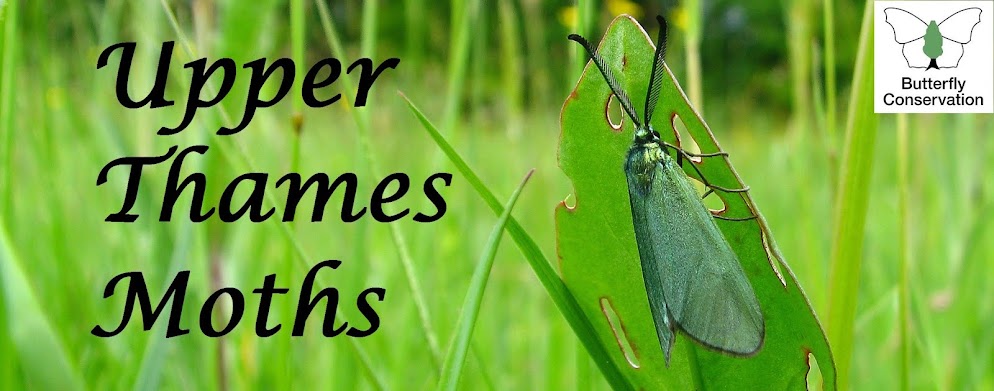In the trap itself, there was my first Twin-spotted Quaker of 2014, pictured above, alongside 31 Common Quakers, five Hebrew Characters, 3 Clouded Drabs, 2 Satellites, a Dotted Border and the moth pictured at the bottom of this post which I hope I am right - sorry for nervous doubts about my recognition skills again - in ID-ing as a beautifully-coloured Small Quaker. Martin Wainwright
Sunday 9 March 2014
Double figures
In the trap itself, there was my first Twin-spotted Quaker of 2014, pictured above, alongside 31 Common Quakers, five Hebrew Characters, 3 Clouded Drabs, 2 Satellites, a Dotted Border and the moth pictured at the bottom of this post which I hope I am right - sorry for nervous doubts about my recognition skills again - in ID-ing as a beautifully-coloured Small Quaker. Martin Wainwright
Subscribe to:
Post Comments (Atom)




Hi Martin, Your Small Quaker looks sound to me, but I think your Small Brindled Beauty is a Brindled Beauty - see what others think. I just had an identical specimen and double-checked it with Peter Hall who confirmed BB. Also had by far my earliest ever Brimstone Moth last night so it could get very interesting in the coming week or so after such a mild winter.
ReplyDeleteJust looking through at posts to see what everyone else is catching and noticed this post. Agree on bottom pic, Small Quaker, but the top pic looks definitely like Small Brindled Beauty to me. Different shape and size (can't get from photo admittedly) and also the band is slightly different too (not so jagged in BB). Impressively early for Brindled Beauty and Brimstone Moth, what a strange 18 months its been. Good to see lots of moths about now, best wishes, Marc
ReplyDeleteDefinetly Small brindled beauty, Martin - a nice species to get in your garden trap.
ReplyDeleteThere's no doubt that the top picture is Small Brindled Beauty. The pictures in the WT&L field guide don't really do it justice. At rest it sits in a different way to either Pale Brindled Beauty or Brindled Beauty (which I'd be surprised to find flying yet - I've never seen it before the beginning of April despite what it says in the guides) and it gives the appearance of having an almost concave costa as shown in Martin's photo.
ReplyDeleteThanks so much as ever for all the expertise. I'm just off to light the trap for tonight. To my horror, my bulb failed last night just as I was setting things up for the warmest night of the year so far, but thank goodness I ordered two from Watkins & Doncaster last time the bulb went (and to be fair, the one which went last night had done an heroic innings of almost two years). All warm wishes and best of luck everyone, Martin
ReplyDeleteFor Alastair in particular, Peter Hall (who is in India at the moment and can read but not comment on the blog) has asked me to contribute this comment:
ReplyDelete"Regarding Alastair's Brindled Beauty/Small Brindled Beauty ID that I did yesterday for him: I think I could easily have erred on this, and this is from the fact that I rarely catch Small Brindled Beauty in the Ballinger garden and have always used thorax thickness and abdomen thickness as an easy separator between Pale Brindled Beauty and Brindled Beauty. Alastair's image showed the latter. Had I not been eating dinner at the time I looked in darkest India, I would and should have asked about wingspan which would have settled the ID. Small Brindled Beauty isn't called that for nothing. In the flesh, size makes separation of these two easy, but images can mislead as in this case. Another factor that I also ignored, probably due to the curry being a stinker, was that BB has declined enormously in recent years which should have triggered a closer look. Apologies. Peter Hall"